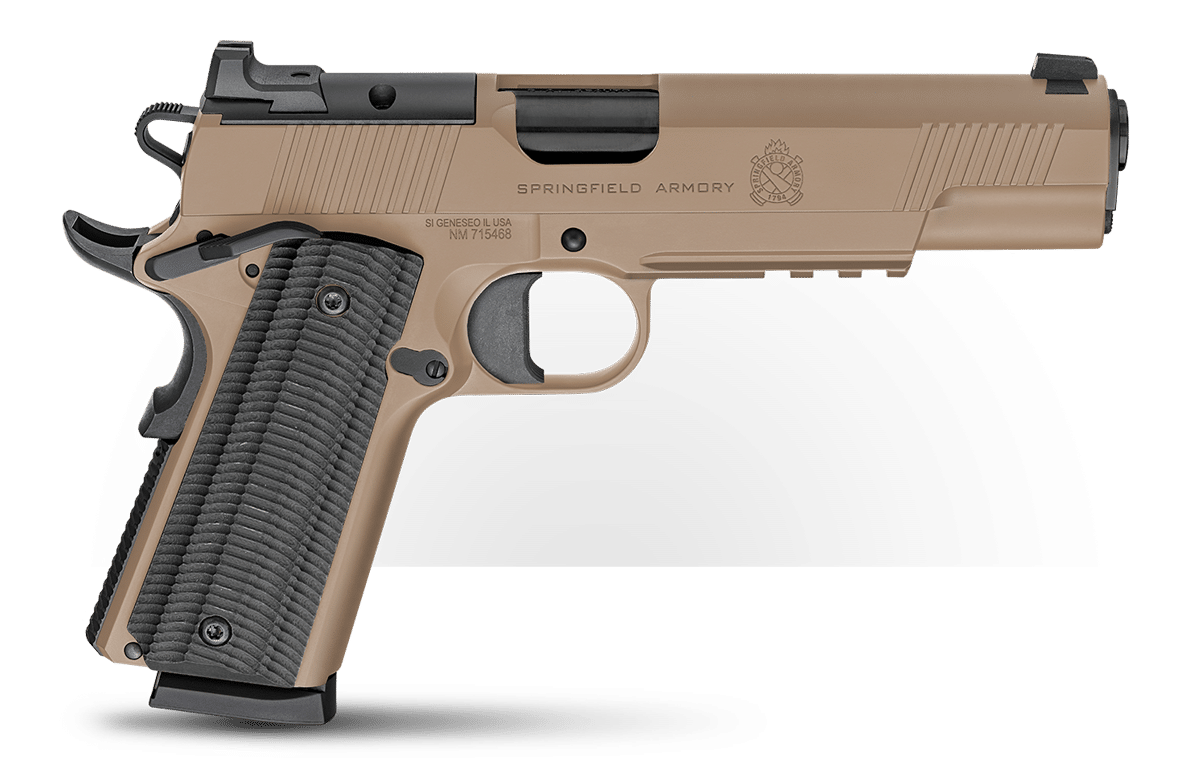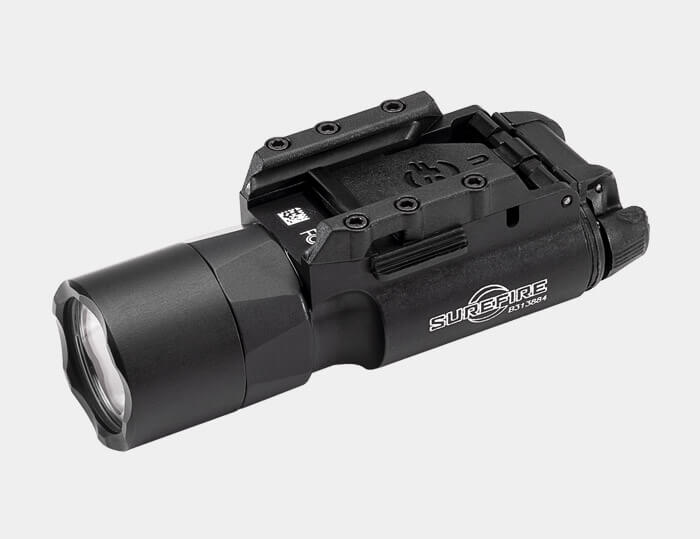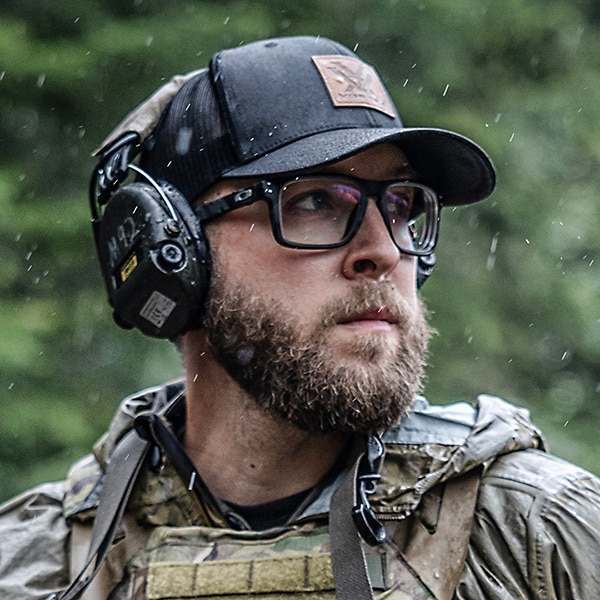Reality Check: Red Dot Sights
November 19th, 2025
6 minute read
Editor’s Note: The author owns a media company that provides work to Vortex Optics and Nosler, companies discussed in this article.
Micro red dots on handguns have become extremely mainstream in the past few years. So much so that many firearms manufacturers are now offering guns packaged with optics straight from the factory. For example, Springfield Armory offers the Shield SMSc on the Hellcat and Hellcat Pro. [Read: Shield SMSc Review for more on that optic.] It’s safe to say we are currently in a micro red dot renaissance, with new offerings becoming available seemingly every day.
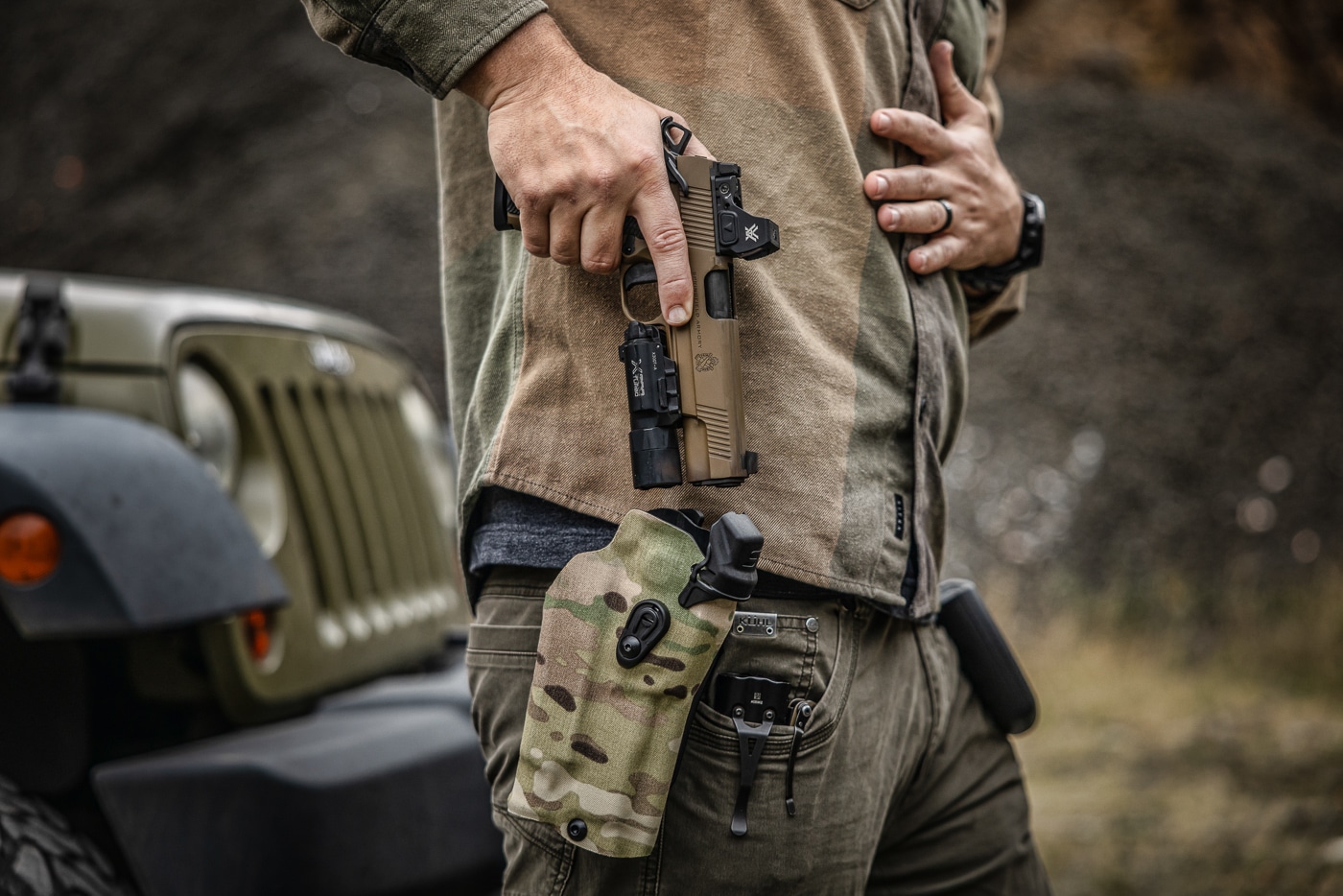
Even classic handguns are getting dot-ready. Not long ago, it would have been considered sacrilegious to put a red dot on a 1911, but these days it’s commonplace — so much so that Springfield now offers many of their 1911s with the AOS (Agency Optic System) mounting platform, like the one found on this coyote tan Operator chambered in .45 ACP.
Admittedly, I was slow to get on board with pistol optics. Having seen so many fads come and go (and in some cases come back again) throughout my career, I tend to approach new trends with a healthy amount of skepticism — especially until there’s real data showing a solid use case.
Initially, my problem with red dots on pistols was that they presented another potential point of failure on the gun. If you didn’t have a reliable backup sighting method, that failure could become a major problem in a fight for your life, should that day ever come. I spend hundreds of hours a year on ranges — either filming content or pulling triggers myself — so I’m fortunate to see firsthand what gear fails most and what holds up over time.
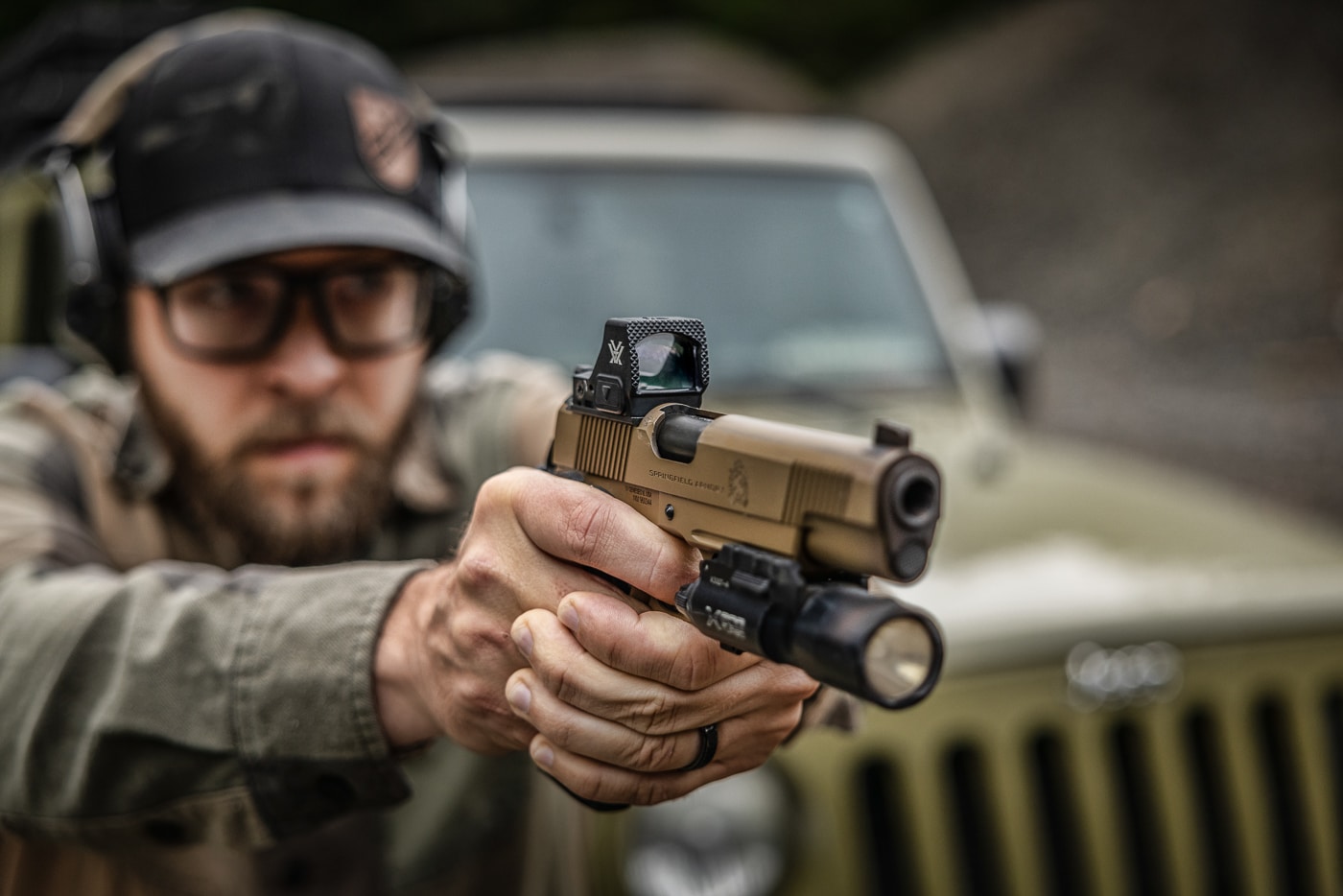
I’ve seen practically every brand of micro red dot and every mounting system fail at some point. Some brands fail rarely if ever; others, far too frequently. All gear breaks eventually if you actually use it — these dots are essentially getting hit with a hammer every time you pull the trigger. So, choosing a quality optic with a long service life is extremely important if you want to be able to depend on it when it matters most.
But, do you need that red dot on there? If you shoot iron sights a lot and spend time training, it’s not hard to become proficient. Accuracy and speed come with practice. So, what real advantage does a red dot offer?
The Moment It Clicked
I could hear gunshots in the dimly lit theater. A woman yelled and ducked behind cover, and as she did, the active shooter ran past — gun in hand — heading toward the front exit. He gave me just a moment to take the shot. I raised my gun, looked through the micro red dot mounted on my pistol, and put two rounds center mass. Everything froze.
“Wow. Good shooting. I’ve had a lot of people in this simulator, and I’ve never seen anyone make that shot before,” said Cory, the VirTra System instructor, as he ended the simulation.

I had just spent a couple of hours inside an advanced law enforcement VR training system called VirTra. It features a nearly 360-degree wraparound screen and allows the use of CO2-powered guns in a variety of active shooter, hostage, and high-risk scenarios. That’s where it finally clicked for me.
Cory had started me off with a pistol with iron sights. After running a few simulations, he switched me to one equipped with a red dot. These scenarios weren’t primarily about marksmanship — they were about processing visual information as quickly as possible to determine who was a threat and who wasn’t.
You need to be able to watch people’s hands, observe their mannerisms, and stay aware of your surroundings using your peripheral vision. This is where the limitations of iron sights become clear — it’s very easy to develop tunnel vision. We’re all trained to be front-sight focused for accuracy, but the problem is that you may lose sight of critical context. You might miss a suspect dropping their weapon, fail to notice an innocent person about to run into your line of fire, or overlook a second threat flanking from the side.
There’s a ton of visual information your brain needs to process under stress in order to make the right decision. This is where a pistol red dot really shines. It helps you maintain situational awareness and reduces tunnel vision — both critical advantages in high-stress encounters. As armed citizens, we can’t just be skilled shooters — we must also be critical thinkers. You can’t take a bullet back once it’s been fired, so you need to be absolutely sure why you’re pulling the trigger — or if you should pull it at all.
It’s my opinion that a red dot helps you do that. It allows you to stay more aware, pick up visual cues more easily, and avoid missing valuable information that could save a life — yours or someone else’s. They let you stay visually engaged with your environment rather than narrowing your vision to a tiny sliver of space in front of the front sight post.

Since that experience five or six years ago, I’ve spent hundreds of hours and thousands upon thousands of rounds training with pistol-mounted red dots. I still believe it’s crucial to have usable iron sights as a backup in case your red dot fails, the battery dies, or the mount loosens. But the advantages of red dots are clear — and that’s why police departments and military units are increasingly adopting them.
Enter the Vortex Optics Defender-ST
I’ve been using the Vortex Defender line since its release, and it has proven to be an incredibly durable and dependable optic line at an affordable price — a hair over $450 for the ST version I am using in this case. And it focuses on what really matters: reliability and durability. The ST offers everything I need. I just want a crisp, fast, and intuitive aiming point that doesn’t distract and doesn’t fail me.
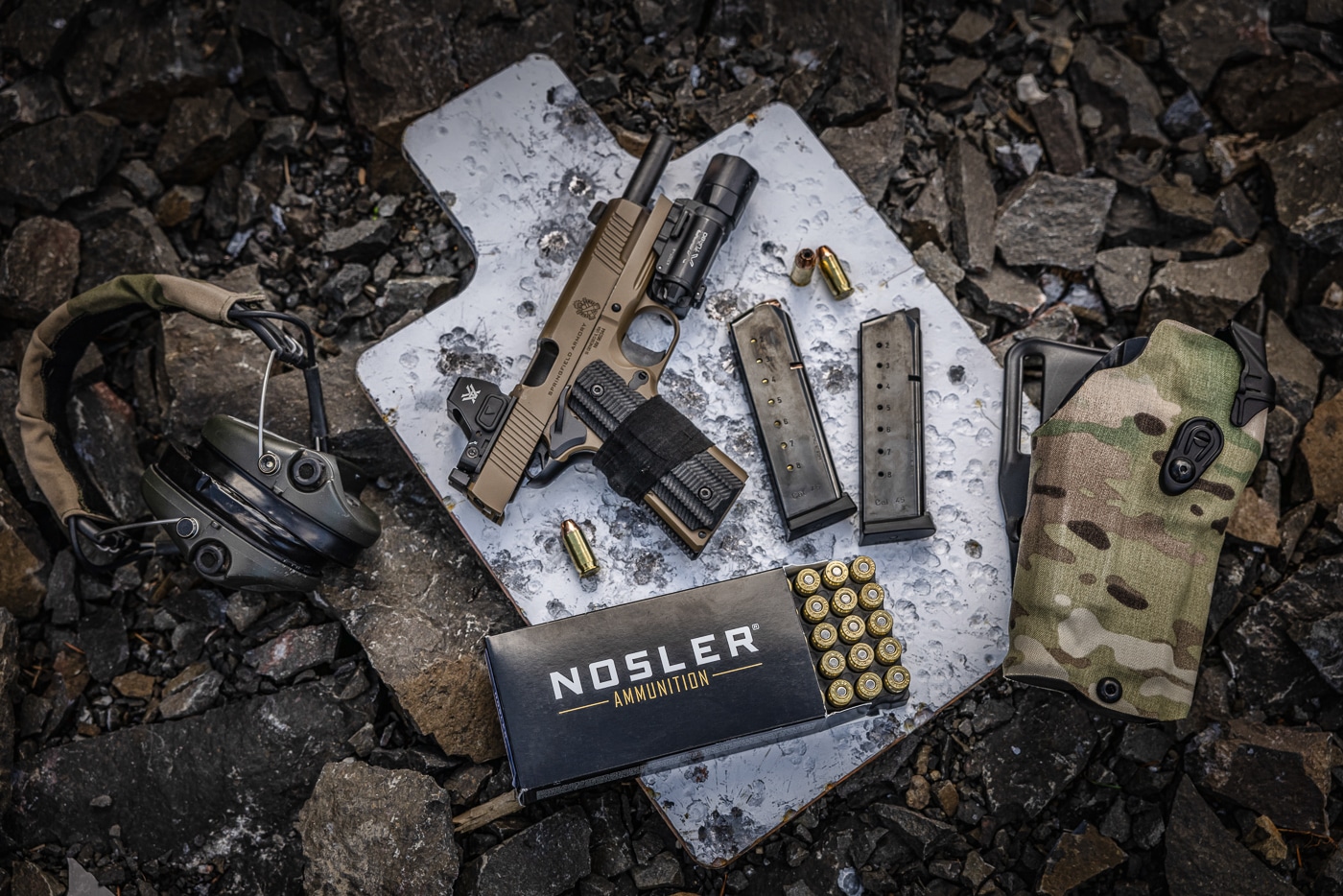
The Defender-ST delivers. The dot clarity is excellent, and the refresh rate is solid. Some optics suffer from edge distortion or an overly blue tint on the glass — this one doesn’t. It also features auto shut-off and shake-awake functions, making it ideal for a bedside or carry gun without draining the battery when not in use.
[Be sure to read Justin Opinion’s Defender-ST review for more information on this RDS.]
I’ve run this optic side-by-side with more expensive options, and the Defender-ST holds its own. My only real complaint is I wish Vortex had gone with the RMR or Aimpoint Acro footprint for it. That said, if you’re using an optic plate system like the AOS on the Springfield 1911 Operator, the footprint doesn’t matter as much. The AOS system supports a wide range of pistol optics, and the Defender-ST fits perfectly. It also allows for co-witnessing with iron sights, which in my opinion is absolutely necessary on any duty or self-defense pistol.
So, What’s Next?
Pistol red dots aren’t a fad — they’re a proven tool. If you’re serious about training, maintaining situational awareness, and performance under stress, it might be time to take the plunge.
Editor’s Note: Be sure to check out The Armory Life Forum, where you can comment about our daily articles, as well as just talk guns and gear. Click the “Go To Forum Thread” link below to jump in!
Join the Discussion
Featured in this article
Continue Reading
Did you enjoy this article?

 17
17




